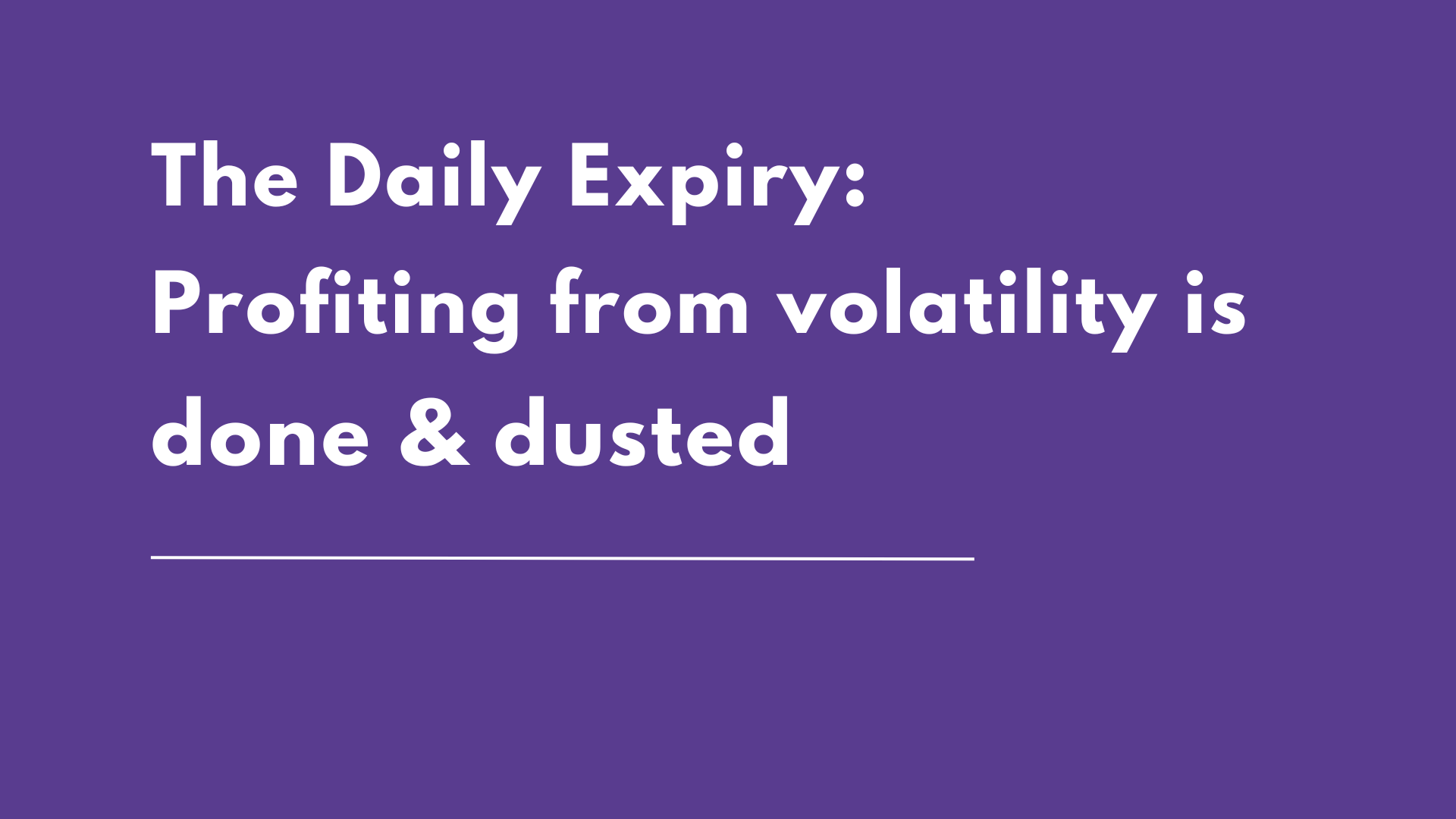Latest news & updates from us

Authored by Shrey Jain, Founder and CEO of SAS Online
Covid-19 triggered an influx of new players, particularly day traders, into the market. A combination of technology and social media helped along this surge. Among these newcomers, daily expiry options seem to have emerged as the preferred flavour.
Of straddles and strangles
High volatility and inflated option premiums during the post-pandemic era presented good opportunities for day traders, particularly for vanilla strategies like straddles and strangles.
Straddles and strangles leverage fluctuations in stock prices. A straddle involves employing both a call and put option with identical strike prices and expiration dates, whereas a strangle utilises a call and put option with a shared expiration date, but distinct strike prices.
By employing theta decay strategies such as these, day traders could profit from premium decay provided the underlying stock did not move too much. Theta decay, also known as time decay, is a key concept in options trading. Theta measures the rate at which the value of an option declines as time passes, all else being equal. This decay occurs because options have a limited lifespan, and their time value diminishes as they approach expiration.
The theta decay strategy involves taking advantage of this natural erosion of option value over time. Traders who employ this strategy typically sell options, such as covered calls or naked puts, to capitalise on the declining time value of these contracts. By selling options with a shorter time-to-expiry, they aim to benefit from accelerated theta decay.
Let's assume that on Friday December 8 you sold a Bank Nifty index call option strike of 47,500, expiry 13 December 2023, at a premium of Rs 225 a unit. Ideally, if the Bank Nifty goes up, the call option premium should go up. On Monday December 11, Bank Nifty closed 52.25 points higher, at 47,314.25. But despite that, due to time decay, the call option premium collapsed by 36.9 percent to Rs 142 a unit. That is equal to a profit of Rs 1,246 on one lot of Bank Nifty.
Measured moves
The day trading landscape has undergone significant transformation in the past six-nine months. The initial boom has given way to a more subdued environment characterised by lower volatility and reduced option premiums. Instead of chasing fleeting momentum, traders now take more tactical and measured positions. Daily expiry provides a limited window, with trades having a shorter shelf life leading to lower volatility, compared to weekly or monthly expiry.
For instance, the Bank Nifty, on a given day, may not be as volatile as it would be on a weekly or monthly basis. In that case, a directional position or a tactical trade would serve the purpose, instead of merely looking for high velocity or high volatility trades.
Though daily expiry for indices provides more opportunities to option buyers to pay less premium and ride volatile moves during a particular day, for option sellers it has virtually eliminated the time value (theta) in option premiums.
Time to take a semi-directional view
The days of passively collecting profits through high volatility and inflated option premiums are over. The current day trading landscape necessitates a fundamental shift in approach, requiring traders to move beyond simple, theta-based strategies and embrace a more active and semi-directional perspective.
Semi directional means option selling positions are build with a slight directional bias. For instance, if Nifty is trading at 21,500 and market seems to be in an uptrend, then one may sell higher quantity puts and lower quantity calls in a straddle/strangle.
With reduced reliance on theta decay, traders need to focus on identifying short-term price movements and exploiting market trends. Traders are going back to the drawing board and re-working strategies and return expectations.
Article is also published in Money Control - Click here
Unlock Stocko's Video Vault: Podcasts, Analysis & Tips Inside!
11 October 2024
Stocko New Features Alert! Coming soon!
26 September 2024
SAS Online is Now Stocko !
21 September 2024

Simply fill the details, connect your bank account & upload your documents.
Open An AccountYou will be redirected in a few seconds.
Post a comment